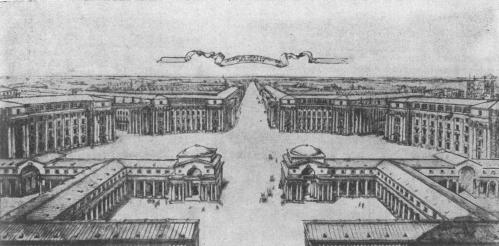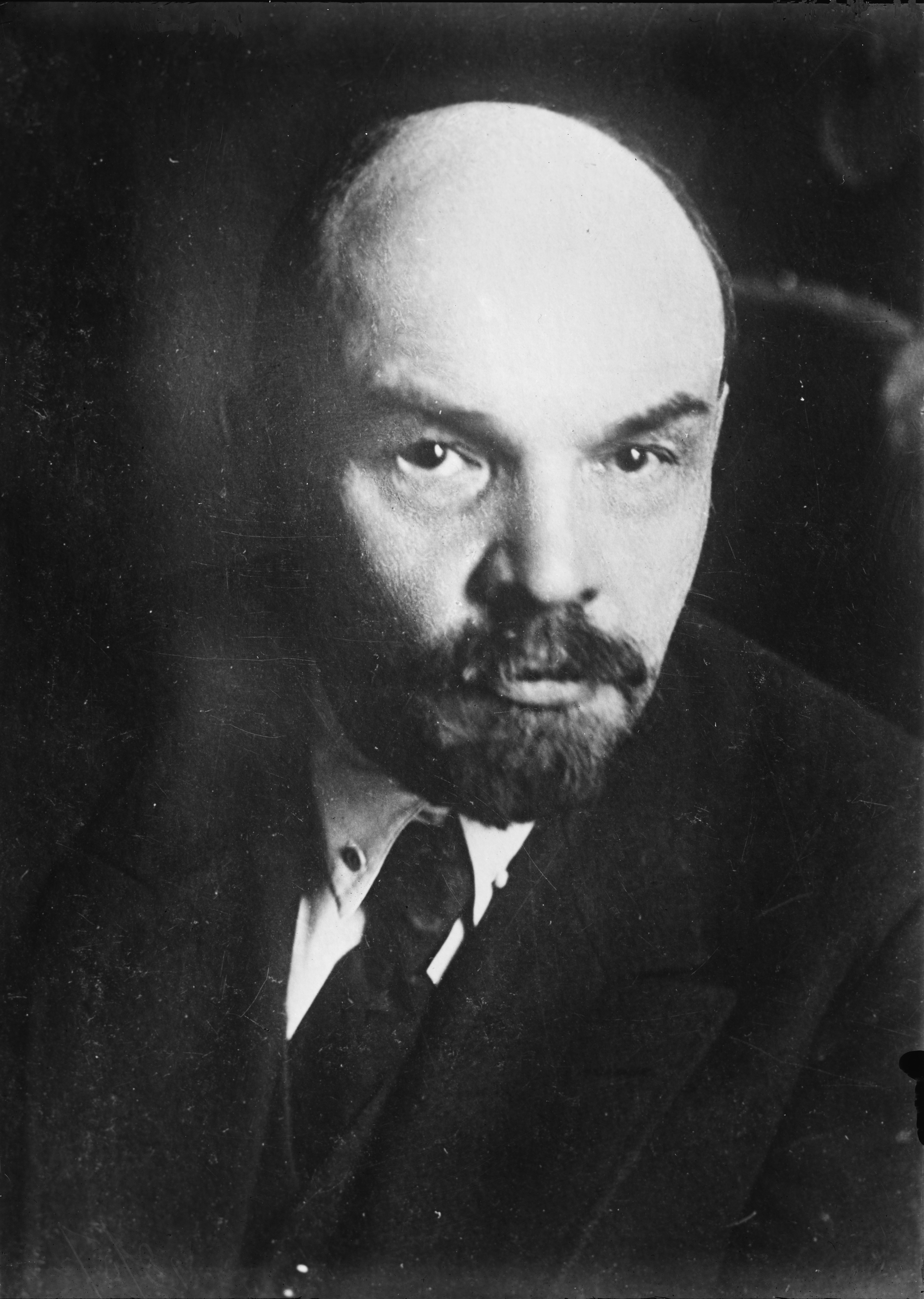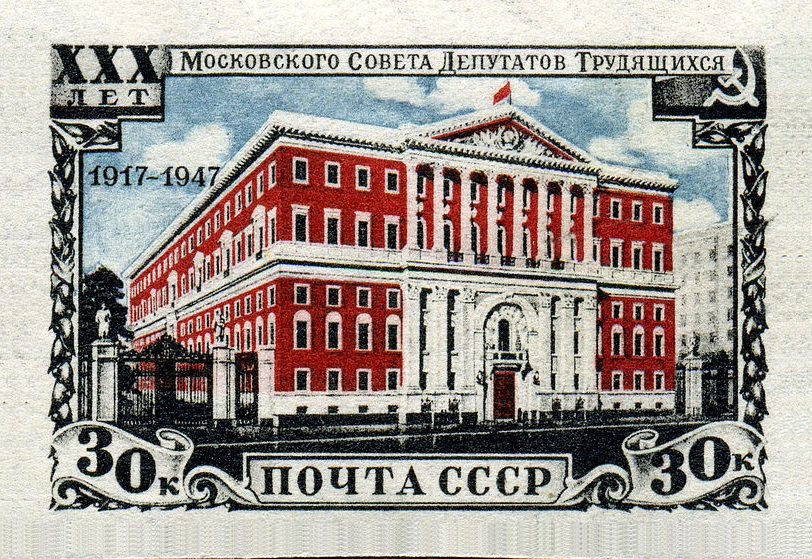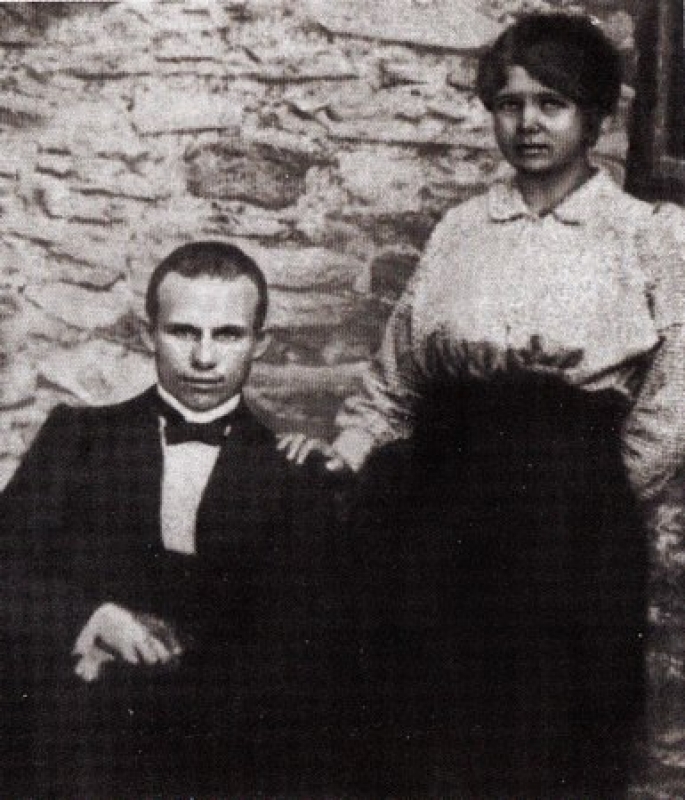|
Building Of Council Of Labor And Defense
The building of Council of Labor and Defense () is a state building located on Okhotny Ryad Street in central Moscow, Russia, 250 meters north of the Kremlin. Since 1994 it has served as the meeting place of the State Duma, the lower house of the Federal Assembly (Russia), Russian parliament. It is alternatively known as State Duma building () or the Okhotny Ryad building (). It has a regional-level cultural heritage status. History The idea of erecting a large representative building near the House of Unions arose in the mid-1920s. In 1926, a competition was held for the design of the building for the State Bank of the USSR, however, construction on this site was also abandoned and the old Bank building on Neglinnaya Street was reconstructed according to the project of Ivan Zholtovsky. In the early 1930s, simultaneously with the competition for the Four Seasons Hotel Moscow, Mossovet hotel, a competition was announced for the project of the Hotel Intourist on the other side of t ... [...More Info...] [...Related Items...] OR: [Wikipedia] [Google] [Baidu] |
State Duma
The State Duma is the lower house of the Federal Assembly (Russia), Federal Assembly of Russia, with the upper house being the Federation Council (Russia), Federation Council. It was established by the Constitution of Russia, Constitution of the Russian Federation in 1993. The Duma headquarters are located in central Moscow, a few steps from Manezhnaya Square, Moscow, Manege Square. Its members are referred to as deputies. The State Duma replaced the Supreme Soviet of Russia, Supreme Soviet as a result of the new constitution introduced by Boris Yeltsin in the aftermath of the Russian constitutional crisis of 1993, and approved in a 1993 Russian constitutional referendum, nationwide referendum. In the 2007 Russian legislative election, 2007 and 2011 Russian legislative elections a full party-list proportional representation with 7% electoral threshold system was used, but this was subsequently repealed. The legislature's term length was initially 2 years in the 1993–1995 ele ... [...More Info...] [...Related Items...] OR: [Wikipedia] [Google] [Baidu] |
Ivan Fomin
Ivan Aleksandrovich Fomin (Russian language, Russian: Иван Александрович Фомин; 3 February [Old Style and New Style dates, O.S. 22 January] 1872 – 12 June 1936) was a Russian architect and educator. He began his career in 1899 in Moscow, working in the Art Nouveau style. After relocating to Saint Petersburg in 1905, he became an established master of the Neoclassicism, Neoclassical Revival movement. Following the Russian Revolution of 1917 Fomin developed a Soviet Union, Soviet adaptation of Neoclassicism and became one of the key contributors to an early phase of Stalinist architecture known as postconstructivism. Early years Born in Oryol, Fomin received a ''classical'' education at a high school in Riga, and studied mathematics at the Moscow State University, Moscow University. In 1894, he joined the Imperial Academy of Arts in Saint Petersburg but was expelled in 1896Russian bio: Лисовский В.Г., "И.А. Фомин", М, 1979. Other sources p ... [...More Info...] [...Related Items...] OR: [Wikipedia] [Google] [Baidu] |
Khoroshyovo-Mnyovniki District
Khoroshyovo-Mnyovniki () – sometimes spelled Khoroshyovo-Mnevniki (''Moskva Entsiklopediya'' (Moscow: Sovetskaya Entsiklopedya, 1980), p. 640.) or Khoroshevo-Mnevniki () due to Yo (Cyrillic)#Russian, common replacement of letter "yo" with "ye" in Russian – is a administrative divisions of Moscow, neighborhood of North-Western Administrative Okrug, North-Western Borough of the federal cities of Russia, federal city of Moscow, Russia. It is about 7 km west of the center of Moscow, with the Moscow river bordering the western and southern sides. The area of the neighborhood is . Population: It is the second most populous neighborhood of the borough (after Mitino District, Mitino). Attractions Approximately one third of the district is occupied by Serebryany Bor (park), Serebryany Bor ("Silver Pinewood") park. Also in the district are Holy Trinity Church in Khoroshyovo, and Terekhovo village. References See also *Administrative divisions of Moscow {{Use mdy dates, date=A ... [...More Info...] [...Related Items...] OR: [Wikipedia] [Google] [Baidu] |
State Duma Of The Russian Federation
The State Duma is the lower house of the Federal Assembly of Russia, with the upper house being the Federation Council. It was established by the Constitution of the Russian Federation in 1993. The Duma headquarters are located in central Moscow, a few steps from Manege Square. Its members are referred to as deputies. The State Duma replaced the Supreme Soviet as a result of the new constitution introduced by Boris Yeltsin in the aftermath of the Russian constitutional crisis of 1993, and approved in a nationwide referendum. In the 2007 and 2011 Russian legislative elections a full party-list proportional representation with 7% electoral threshold system was used, but this was subsequently repealed. The legislature's term length was initially 2 years in the 1993–1995 elections period, and 4 years in 1999–2007 elections period; since the 2011 elections the term length is 5 years. History Early history The history of the duma dates back to the boyar dumas of Kievan Rus ... [...More Info...] [...Related Items...] OR: [Wikipedia] [Google] [Baidu] |
Gosplan
The State Planning Committee, commonly known as Gosplan ( ), was the agency responsible for economic planning, central economic planning in the Soviet Union. Established in 1921 and remaining in existence until the dissolution of the Soviet Union in 1991, Gosplan had as its main task the creation and administration of a series of Five-year plans of the Soviet Union, five-year plans governing the economy of the Soviet Union, economy of the USSR. History Economic background The time of the October Revolution and the Russian Civil War which followed was a period of virtual economic collapse. Production and distribution of necessary commodities were severely tested as factories were shuttered and major cities such as Petrograd (now Saint Petersburg) were depopulated, with urban residents returning to the countryside to claim a place in land redistribution and in order to avoid the unemployment, lack of food, and lack of fuel which had become endemic. By 1919 the country was in hype ... [...More Info...] [...Related Items...] OR: [Wikipedia] [Google] [Baidu] |
Council Of Ministers Of The USSR
The Council of Ministers of the Union of Soviet Socialist Republics ( rus, Совет министров СССР, r=Sovet Ministrov SSSR, p=sɐˈvʲet mʲɪˈnʲistrəf ˌɛsˌɛsˌɛsˈɛr), sometimes abbreviated as Sovmin or referred to as the Soviet of Ministers, was the ''de jure'' government of the Union of Soviet Socialist Republics (USSR), comprising the main executive and administrative agency of the USSR from 1946 until 1991. During 1946 the Council of People's Commissars was reorganized as the Council of Ministers. Accordingly, the People's Commissariats were renamed as Ministries. The council issued declarations and instructions based on and in accordance with applicable laws, which had obligatory jurisdictional power in all republics of the Union. However, the most important decisions were made by joint declarations with the Central Committee of the Communist Party of Soviet Union (CPSU), which was '' de facto'' more powerful than the Council of Ministers. During 19 ... [...More Info...] [...Related Items...] OR: [Wikipedia] [Google] [Baidu] |
Council Of People's Commissars Of The USSR
The Council of People's Commissars of the Soviet Union was the highest collegial body of executive and administrative authority of the Soviet Union from 1923 to 1946. As the government of the Soviet Union, the Council of People's Commissars of the Soviet Union and the People's Commissariats led by it played a key role in such significant events for the country and society as the economic recovery after the Civil War, the New Economic Policy, agricultural collectivization, electrification, industrialization, five-year plans for the development of national economy, censorship, the fight against religion, repression and political persecution, the Gulag, the deportation of peoples, the annexation of the Baltic States and other territories by the Soviet Union, the organization of the partisan movement, the organization of industrial production in the rear during the Great Patriotic War. In 1946, it was transformed into the Council of Ministers of the Soviet Union. History 200px ... [...More Info...] [...Related Items...] OR: [Wikipedia] [Google] [Baidu] |
La Douma D'Etat - Panoramio
LA most frequently refers to Los Angeles, the second most populous city in the United States of America. La, LA, or L.A. may also refer to: Arts and entertainment Music * La (musical note), or A, the sixth note *"L.A.", a song by Elliott Smith on ''Figure 8'' (album) * ''L.A.'' (EP), by Teddy Thompson *'' L.A. (Light Album)'', a Beach Boys album * "L.A." (Neil Young song), 1973 *The La's, an English rock band *L.A. Reid, a prominent music producer * Yung L.A., a rapper *Lady A, an American country music trio * "L.A." (Amy Macdonald song), 2007 *"La", a song by Australian-Israeli singer-songwriter Old Man River *''La'', a Les Gordon album Other media * l(a, a poem by E. E. Cummings * La (Tarzan), fictional queen of the lost city of Opar (Tarzan) *'' Lá'', later known as Lá Nua, an Irish language newspaper * La7, an Italian television channel *LucasArts, an American video game developer and publisher * Liber Annuus, academic journal Business, organizations, and government ... [...More Info...] [...Related Items...] OR: [Wikipedia] [Google] [Baidu] |
Sergey Chernyshyov (architect)
Sergey Egorovich Chernyshyov (; 4 October 1881 - April 26, 1963) was a Russian and Soviet architect, urban planner and teacher, chief architect of Moscow in 1934–1941, author of the General Plan for the Reconstruction of Moscow (1935). 1st Secretary of the Union of Architects of the USSR (1950–1955). Winner of the Stalin Prize, first degree (1949), for the design of the Main building of Moscow State University). Biography Born in 1881 in the village of Aleksandrovka, Kolomensky District, Moscow Oblast into a peasant family. His father was a self-taught icon painter. Chernyshyov showed early artistic talent and in 1893 a peasant gathering decided to send him to study. In the same year he entered the Moscow School of Painting, Sculpture and Architecture. At first he studied in the painting class of Valentin Serov, Isaac Levitan, Konstantin Korovin and Apollinary Vasnetsov, then he became interested in architecture and was transferred to the architectural class. He graduated ... [...More Info...] [...Related Items...] OR: [Wikipedia] [Google] [Baidu] |
Vyacheslav Molotov
Vyacheslav Mikhaylovich Molotov (; – 8 November 1986) was a Soviet politician, diplomat, and revolutionary who was a leading figure in the government of the Soviet Union from the 1920s to the 1950s, as one of Joseph Stalin's closest allies. Molotov served as Chairman of the Council of People's Commissars (head of government) from 1930 to 1941, and as Minister of Foreign Affairs from 1939 to 1949 during the era of the Second World War, and again from 1953 to 1956. An Old Bolshevik, Molotov joined the Russian Social Democratic Labour Party in 1906 and was arrested and internally exiled twice before the October Revolution of 1917. He briefly headed the party's Secretariat before supporting Stalin's rise to power in the 1920s, becoming one of his closest associates. Molotov was made a full member of the Politburo in 1926 and became premier in 1930, overseeing Stalin's agricultural collectivization (and resulting famine) and his Great Purge. As foreign minister from 1939, Mo ... [...More Info...] [...Related Items...] OR: [Wikipedia] [Google] [Baidu] |
Moscow City Committee Of The Communist Party Of The Soviet Union
The First Secretary of the Moscow City Committee of the Communist Party of the Soviet Union was the position of highest authority in the city of Moscow, roughly equating to that of mayor. The position was created on November 10, 1917, following the October Revolution, and abolished on August 24, 1991. The First Secretary was a ''de facto'' appointed position, usually by the Politburo or the General Secretary himself. Until the abolition of the CPSU monopoly on power on March 14, 1990, he had actual power in Moscow. First Secretaries {, class="wikitable" !rowspan="2", Name !colspan="2", Term of Office !rowspan="2", Life years , - ! Start ! End , - , Vadim Podbelskiy , 10 November 1917 , 12 April 1918 , 1887–1920 , - , Dominik Yefremov , 12 April 1918 , 7 September 1918 , 1883–1925 , - , Vladimir Zagorsky , 17 September 1918 , 25 September 1919 , 1883–1919 , - , Dominik Yefremov , October 1919 , November 1919 , 1883–1925 , - , Alexander Myasnakov ... [...More Info...] [...Related Items...] OR: [Wikipedia] [Google] [Baidu] |
Nikita Khrushchev
Nikita Sergeyevich Khrushchev (– 11 September 1971) was the General Secretary of the Communist Party of the Soviet Union, First Secretary of the Communist Party of the Soviet Union from 1953 to 1964 and the Premier of the Soviet Union, Chairman of the Council of Ministers (premier) from 1958 to 1964. During his tenure, he stunned the communist world with his denunciation of his predecessor Joseph Stalin and embarked on a campaign of de-Stalinization with his key ally Anastas Mikoyan. Khrushchev sponsored the early Soviet space program and presided over various domestic reforms. After some false starts, and a Cuban Missile Crisis, narrowly avoided nuclear war over Cuba, he conducted successful negotiations with the United States to reduce Cold War tensions. In 1964, the Kremlin circle Nikita Khrushchev#Removal, stripped him of power, replacing him with Leonid Brezhnev as the First Secretary and Alexei Kosygin as the Premier. Khrushchev was born in a village in western Russia. ... [...More Info...] [...Related Items...] OR: [Wikipedia] [Google] [Baidu] |






